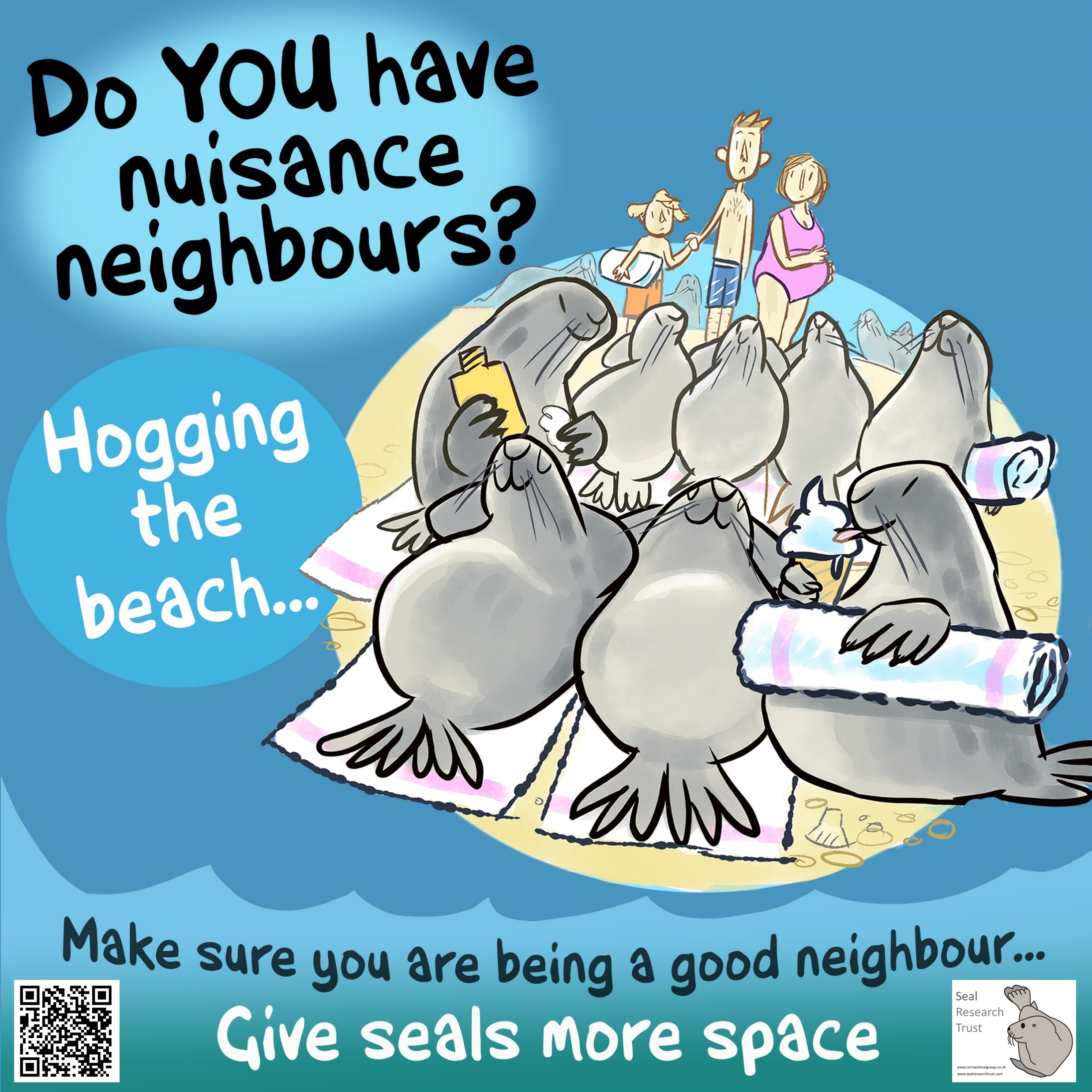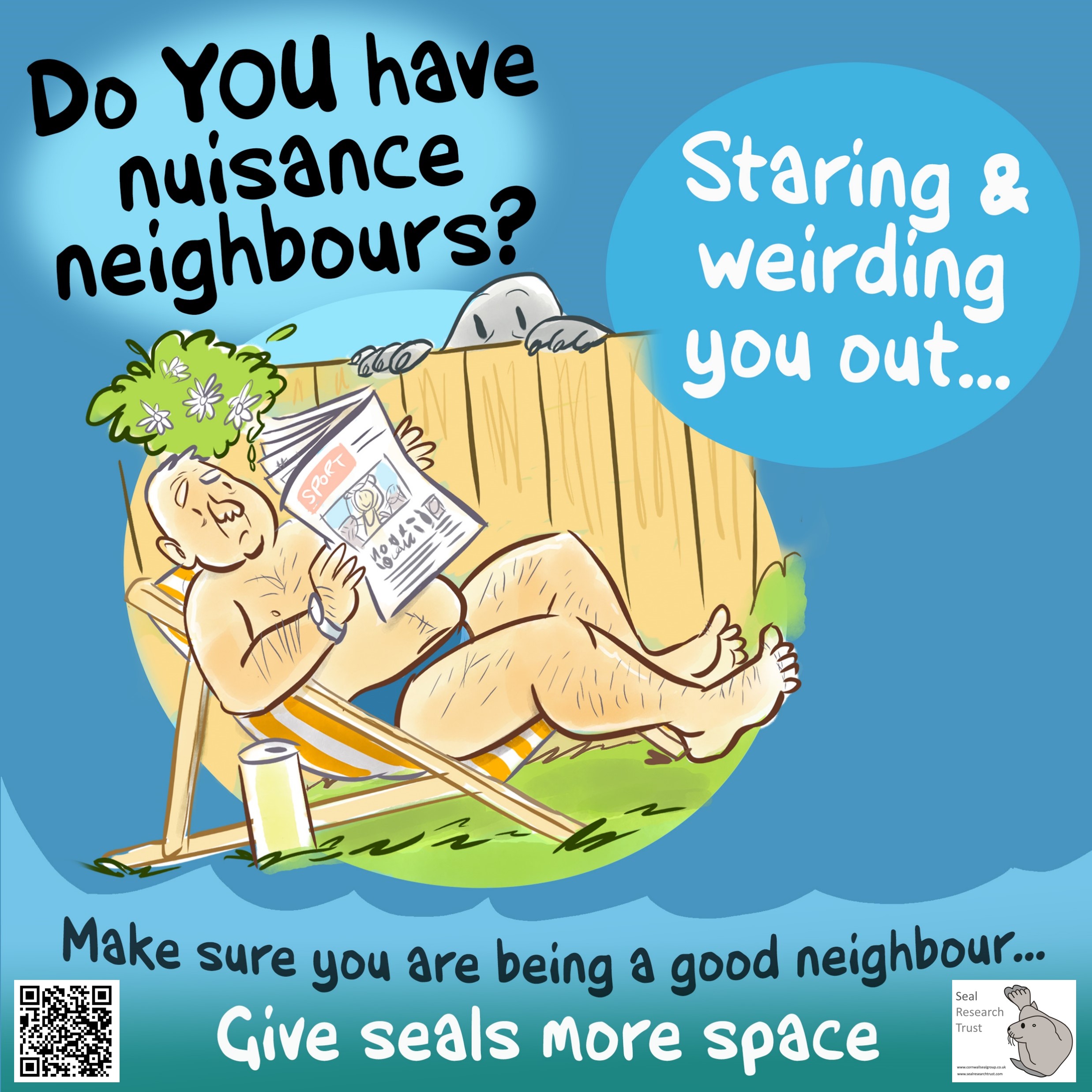Seedcorn 2021/2022
It is increasingly recognised that human health and wellbeing can be fostered through encounters with the natural world and wildlife¹. Be it unexpected or planned, sighting a charismatic marine species such as the grey seal is often an exciting and meaningful experience that encourages a connection to the natural world². However, there also exists a conflict between the human desire to observe and interact with seals, the conservation of the species, individual seal welfare and the economy of which they are a part.
Seals must haul-out on land to rest, breed, pup and moult and it is this behaviour that ensures they are a visible and reliable target species for wildlife watching. However, human behaviour such as approaching seals on a beach can cause them to hurriedly abandon resting spots or dive quickly to escape threat. This can have a detrimental impact on the ability of seals to live well and thrive. Consequences include the abandonment of pups, missed foraging opportunities, a disruption in their energy balance, and possible injury or death³ ⁴. When observing seals in this context and potentially driving seals to harm, humans cannot be said to be coexisting well with seals. This work will take a participatory and creative approach to explore the relationship between the seals and observers in order to promote the health and wellbeing of both groups. It will place the stakeholders of wildlife watching at the forefront of imagining and communicating what it means to have an ethical relationship between seals and those that want to observe them.
The activity of seal watching is a complex set of relations between individual narratives/experiences of “seeing the seals”, the value of seal-watching trips to the local economy, conservation aims and the experiences of the seals themselves. The activity involves a diverse set of stakeholder groups including recreationists, tourists, tour operators, charities, local community groups and seal advocacy groups. The narratives and experiences of these groups are often not sufficiently reflected in current codes of conduct and educational materials designed to tackle the issue, potentially limiting their effectiveness. Space for Seals aims to:
- Understand the relationships between the human stakeholders of wildlife watching and the seals, and how they inform detrimental interspecies interactions.
- Explore the different ethical relationships human stakeholders could develop with seals, that focus on care and responsibility.
- Identify novel and engaging possibilities for communication and intervention with different interspecies stakeholders.
- Bell et al. 2018 Landscape Research, 43, p.8-19;
- Yerbury et al. 2020 Anthrozoos, 33, p.461-479;
- Tadeo et al. 2021 Aquatic Mammals, 47, p.268-282;
- Andersen et al. 2012 Aquatic Conservation, 22, p.113-121
What did the project involve?
The research team ran creative participatory workshops with members of human stakeholder groups to create space for meaningful interaction between the participants on how to optimise human-seal relations. The aims of the workshops were to explore the more-than-human entanglements and interrelations that human stakeholders and seals find themselves in. Participants were invited to relate to seals differently, by entering into different relations with the (absent) bodies of the animals themselves. They explored interspecies relations through a variety of creative activities that combined narrative approaches, material experiments and playful performance-based activities. Two workshops were held at the Carbis Bay Hotel. The project team took part in public tripper boat visits to the key sensitive seal sites to experience first-hand public interactions with, and responses to, seals. Beca Phillips, a student researcher, conducted a literature review about seal and human interactions and interviewed members of the public at two contrasting sites on either side of the Bay – in the town of St Ives and on the wild headland at Godrevy.
The workshop saw participants engaging in a sensory way with their environment as they approached the sea, followed by a creative activity of building a life-sized seal on the beach before releasing it back into the ocean. This was followed by an exploration of the issues, thoughts and relationships we all have with our wider environment.
The workshop activities provided a foundation for the co-production of a toolkit that sought to communicate and strengthen implementation of best practice guidelines to use as a tool for future conservation and community engagement. The toolkit aims to allow larger groups to begin reimagining their relationships to the seals and assist in promoting good practice.This toolkit may also be used by Seal Research Trust, local marine groups in Cornwall, Cornwall Marine and Coastal Code Group, Seal Alliance group members, Members of the Marine Mammal Disturbance Partnership run by Natural England and other interested parties.
This research project will also develop of a set of more-than-human maps of spaces (physical, geographical, sensory) for seal interactions and the processes will be documented and written up in a co-authored blog by members the project team.
This team brings together expertise in trans-disciplinary, creative and co-produced research methodologies to explore the theme of seal/human interactions from a new perspective.
Who are the team and what do they bring?
- Paul Hurley (Artist) is a transdisciplinary artist-researcher specialising in creating socially engaged art projects, participatory and artistic research, and public engagement. His interests are in more-than-human worlds, performed identities and in cultural knowledges and agency.
- Emma Roe (Associate Professor Geography, University of Southampton) is a leading trans-disciplinary scholar developed from her core concerns in more-than-human geographies.
- Leah Trigg (Senior Research Associate, University of Bristol) conducts research focussed on animal behaviour and welfare including the impacts of anthropogenic activities on grey seals. Specifically, she has published on the behavioural reactions and potential auditory damage to seals from underwater vessel noise in the English Channel and Celtic Sea, and supervised research related to the disturbance of seals by tourism.
- Sue Sayer (Founder and Director of the Seal Research Trust) leads a charity that surveys seals at locations around Cornwall and promotes their conservation in partnership with citizen scientists nationally. The group have a close connection to the local community and drive activities to prevent disturbance including lobbying for changes to legislation.
What were the results?
There were two primary outcomes from the project. Seal Research Trust developed a 'manifesto for seals' which serves as a list of things that seals need from us. The research team believe this flipped perspective (from what we need to give seals) is transformational and forms the concrete focus for their future conservation work.
The second outcome was the concept that seals need humans to be 'good neighbours'. During the project workshops, participants explored the idea of good neighbours. Based off of these discussions, the artist Sam Church was enlisted to produce a series of cartoons to inform the public of the human risk to be a nuisance neigbour, illustrating what some of our human relationships are like with seals currently, with an ask for us all to be better neighbours.






